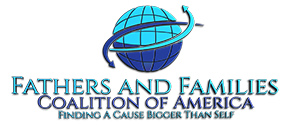
The Power of Kintsugi 金継ぎ
A Pathway to Meaning, Purpose, and Healing in FFCA Programs
The Power of Kintsugi 金継ぎ: A Pathway to Meaning, Purpose, and Healing in FFCA Programs
Fathers and Families Coalition of America provides extensive skill-building and training across all our signature programs. Whether participants enroll in the Advanced Practitioner Credential™ Course, OAR Leadership Institute, or the DiSC FFCA Model™, our curriculum intentionally integrates both Eastern and Western frameworks to inspire new pathways of opportunity—building bridges for growth in both personal and professional life.
The following activity, grounded in all three programs, is an example of our model that stresses the concept of "even more." Each participant is trained in the Kintsugi philosophy (金継ぎ, “golden joinery” or 金繕い, “golden repair”) and explores how this timeless wisdom applies to Ikigai (生き甲斐, meaning “a reason for being”), helping individuals clarify their life’s purpose and vision.
In addition, we integrate the foundational teachings of Logotherapy, a therapeutic approach developed by Viktor Frankl. Logotherapy emphasizes the search for meaning in life as a primary motivator for human existence. It posits that meaning can be found through purposeful work or creativity, experiencing love, and finding courage in the face of unavoidable suffering. Through this lens, our trainings help individuals explore deeper layers of purpose, resilience, and self-worth—creating transformative opportunities for healing and leadership.
All of FFCA’s programs are based on our four core pillars: Psychological, Emotional, Behavioral, and Noological dimensions of self. Through this integrative approach, we empower participants to elevate their practice and their lives through meaning-centered, trauma-informed, and resilience-based work.
Theoretical Frameworks
- Kintsugi Philosophy (Santini & Rodríguez): Embracing imperfection, beauty, and restoration as strengths. The Kintsugi tradition from Japanese culture reminds us that broken objects are not discarded but repaired with gold, becoming even more beautiful. Applied to trauma and human growth, Kintsugi validates that emotional wounds can be sources of wisdom and connection. In our practice, we use Kintsugi both as metaphor and experiential activity to model restorative growth.
- Narrative Therapy: Participants are guided to re-story their trauma experiences using expressive writing and metaphor. Through narrative therapy, they transform internal narratives from victimhood to empowerment, with the Kintsugi process serving as an external anchor for this transformation.
- Schema Therapy: This model helps identify and heal maladaptive schemas rooted in childhood or relational trauma. By working with symbolic broken and repaired objects, individuals can activate emotional repair and resilience-building pathways. Kintsugi visualizes this process by celebrating the repaired rather than hiding the wound.
- Cognitive-Behavioral Tools: Through guided reflection, reframing, and visualization, participants practice shifting inner dialogue from shame and limitation toward resilience and possibility. The physical process of repairing a broken object parallels restructuring negative thought patterns and fostering adaptive thinking.
- The Five Love Languages: The Kintsugi exercise provides a safe space to explore how different "languages of love" (words of affirmation, acts of service, quality time, physical touch, and receiving gifts) contribute to healing, relational connection, and leadership. Facilitators highlight how understanding love languages enhances trauma-informed care.
- Mindfulness and Meditation: Throughout the workshop, participants engage in mindfulness-based reflection and practices that build present-moment awareness and enhance internal peace. Mindful observation of the breaking and reassembly process allows space for introspection and intentionality.
- Loving Kindness Meditation (UCLA MARC): The session closes with Loving Kindness Meditation, which supports self-compassion and the extension of compassion to others. This practice integrates and anchors the healing experience and models an adaptable tool participants can use in personal and professional settings.
- Ikigai 生き甲斐: A Japanese concept referring to “a reason for being.” In FFCA trainings, Ikigai guides individuals to align their values, talents, passions, and contributions—fostering a sense of purpose and fulfillment in life and leadership.
- Logotherapy: Rooted in the work of Viktor Frankl, Logotherapy helps individuals identify and pursue meaning through creativity, love, and courage. In the face of trauma or adversity, it supports resilience, clarity, and a renewed sense of direction—integral to the FFCA approach to healing and growth.

Emotional Intelligence and Kintsugi: Preparing the Heart for Transformation
At Fathers and Families Coalition of America, we believe that effective leadership and healing-centered work begins with emotional intelligence. This is why our Advanced Practitioner Credential™ Course, OAR Leadership Institute, and DiSC FFCA Model™ programs are grounded in both emotional and cognitive development. Through tools such as the Global Leadership Emotional Intelligence Test, Focus Mapping (from Schema Therapy), and the Five Love Languages, participants build key skills in self-awareness, self-regulation, empathy, and relationship management.
The Kintsugi Workshop Process expands this work by inviting participants to practice deep emotional intelligence through symbolic action—breaking and repairing a ceramic object. This activity fosters:
- Greater awareness of personal emotional wounds and resilience
- Mindfulness and patience in the face of imperfection
- Empathy and compassion—toward self and others
- Reframing and post-traumatic growth
- Alignment with meaning and purpose through Ikigai 生き甲斐 and Logotherapy
As participants begin the physical process of breaking and restoring their chosen object—a heart-shaped ceramic plate, bowl, or personal item—they activate both emotional intelligence and trauma-informed insight, creating a lived experience of growth through vulnerability.
Kintsugi Workshop Process: Breaking Insights to Build Masterpieces
Adapted from "Breaking Insights to Build Masterpieces" (Burke), integrated with FFCA Emotional Intelligence and Resilience Models
STEP 1: Setting Intention (The Empty Vessel)
"The bowl before the break is already sacred. The break allows it to tell a deeper story."
Participants reflect on the life experiences they carry into the room.
Guided visualization: Imagine yourself as a vessel of strength, wisdom, and wounds.
Journal Prompt:
- What parts of my life feel fragile, cracked, or incomplete right now?
- What strengths do I already possess that can serve my healing?
STEP 2: The Break (Embracing Vulnerability)
"The break is not the end—it is the beginning of transformation."
Participants intentionally break their ceramic heart bowl.
Mindfulness moment: Pause to observe the pieces without judgment.
Journal Prompt:
- When have I felt ‘broken’?
- What did I learn about myself in those moments?
STEP 3: The Discovery (Insights Within the Pieces)
"Every shard carries a memory and a potential gift."
Participants gently explore each fragment.
Facilitator prompts reflection:
- What pieces feel most important?
- What lessons or messages do certain pieces hold?
Group Sharing (Optional): What unexpected beauty or insight is revealed when we examine our “shards”?
STEP 4: The Reframe (Choosing Gold)
"The gold we choose represents values, wisdom, and new possibilities."
Participants select which adhesive and gold pigment they wish to use (symbolic choice).
Reflective journaling:
- What qualities do I want to strengthen through this repair? (Examples: forgiveness, resilience, courage, compassion)
- What relationships or parts of my life need this gold right now?
STEP 5: The Creation (Restoration in Progress)
"In the act of repairing, we honor the process—not just the outcome."
Participants begin the guided restoration of their bowl.
Music and quiet space provided.
Invitation to:
- Work slowly.
- Reflect on the parallels between repairing the object and their own emotional restoration.
STEP 6: Reflection and Narrative Reclamation
"Now the story continues—with new strength woven in."
Journal Prompt:
- What gold do I now see in myself?
- What part of my life can now shine with renewed strength?
- Who might benefit from witnessing my story of healing?
Participants may write a personal display card (1–3 paragraphs) summarizing their reflection.
Optional Group Reflection: Those who wish may share their “gold story” with others.
STEP 7: Integration and Future Vision (Kintsugi as a Living Practice)
"Our vessels continue to be repaired and strengthened over time."
Participants complete the Kintsugi Assessment Tool and create an Action Plan.
Reflection:
- How will I apply the Kintsugi philosophy in my personal healing?
- How will I apply it in my relationships?
- How will I apply it in my leadership or professional practice?
Invitation to commit to one visible action post-workshop (e.g., a conversation, a leadership decision, a personal ritual).

Building Bridges from Broken Pieces
The Kintsugi process teaches us that brokenness is not the end of a story — it is the beginning of transformation. In this workshop process, participants build bridges from their broken pieces — for themselves, their relationships, and the systems they lead. Through hands-on art-making, reflective practice, and trauma-informed frameworks, this activity fosters deep healing and resilience while honoring emotional intelligence as a leadership capacity.
Exploring the Art of Kintsugi
Core Principles:
- Even More Beautiful
- Even More Precious
- Even More Resilient
- Even More Present
Personal Reflection Prompt: Where have I been broken? Where have I been restored?
Healing Through Creation: Kintsugi Bowl Exercise
- Participants receive heart-shaped bowls and gold lacquer repair kits
- Guided breaking and restoration of the bowls
- Reflective journaling and quiet music during activity
- Optional small-group sharing
Reflection and Narrative Reclamation
Writing Prompt: What gold do I now see in myself?
Participants may write a display card (1–3 paragraphs) to honor their process. Group reflection or solo journaling based on comfort level.
Integrating the Kintsugi Philosophy Assessment
- Participants complete the Kintsugi Assessment Tool
- Four assessment domains:
- Self-Acceptance
- Personal Growth and Worth
- Resilience and Coping
- Mindfulness and Presence
- Personalized Action Plan based on assessment results
Closing with Compassion: Loving Kindness Meditation
- Guided audio or live reading using UCLA MARC meditation script
- Inviting love inward, then expanding it outward
- Quiet space for inner stillness and group solidarity
Materials Needed
- Heart-shaped ceramic plates or bowls (4–6” size, unglazed ceramic)
- Gold-colored lacquer or repair adhesive
- Small brushes, soft cloths, gloves (optional), protective table covers
- Journals or reflection notebooks
- Printed Kintsugi Philosophy Assessment Tool
- Printed reflection display cards (4”x6” cards or similar)
Facilitator Supplies:
- Facilitator script and timeline
- Music playlist for reflection periods
- Audio file or printed script of UCLA MARC Loving Kindness Meditation
- Extra bowls and repair materials for demonstration
Program Impacts
Individual Impacts:
- Increased self-compassion and self-acceptance
- Ability to reframe trauma as a source of growth
- Enhanced emotional intelligence and resilience
- Development of post-traumatic wisdom
Professional Impacts:
- Art-based, metaphor-driven healing with clients and teams
- Greater capacity to lead with empathy and vulnerability
- Modeling restorative leadership across systems
- Creation of psychologically safe spaces within organizations
Systemic Impacts:
- Fosters a culture that honors imperfection and embraces repair
- Bridges diverse teams through shared vulnerability and collective strength
- Supports trauma-informed organizational change
CEU Questions
- The Kintsugi philosophy teaches that:
- Brokenness should be hidden from others.
- Restoration makes an object more valuable and beautiful.
- Only complete perfection is valuable.
- Emotional wounds are irrelevant to professional practice.
- Narrative Therapy supports trauma healing by:
- Repeating trauma stories for desensitization.
- Encouraging clients to "forget" traumatic experiences.
- Rewriting internal narratives to foster empowerment and agency.
- Reframing trauma as non-existent.
- Schema Therapy in this workshop helps participants:
- Identify and heal maladaptive schemas through experiential metaphor.
- Ignore childhood wounds and focus on the present only.
- Eliminate all negative emotions.
- Suppress difficult memories.
- The Five Love Languages contribute to trauma-informed practice by:
- Providing a clinical diagnosis tool.
- Strengthening emotional fluency and relational healing.
- Replacing traditional psychotherapy.
- Avoiding discussions about emotional connection.
- The purpose of integrating Loving Kindness Meditation in this workshop is to:
- Distract from emotional discomfort.
- Practice extending compassion to self and others.
- Replace the need for other therapeutic interventions.
- Encourage competition among participants.
Conclusion
The Building Bridges from Broken Pieces section of the Advanced Practitioner Credential™ Course offers a profound, structured pathway for expanding trauma-informed capacities, deepening emotional intelligence, and fostering systemic resilience. Through hands-on experiences and reflective practice, participants not only repair objects — they begin to repair narratives, relationships, and communities. In doing so, they help create the bridges this world so desperately needs.

